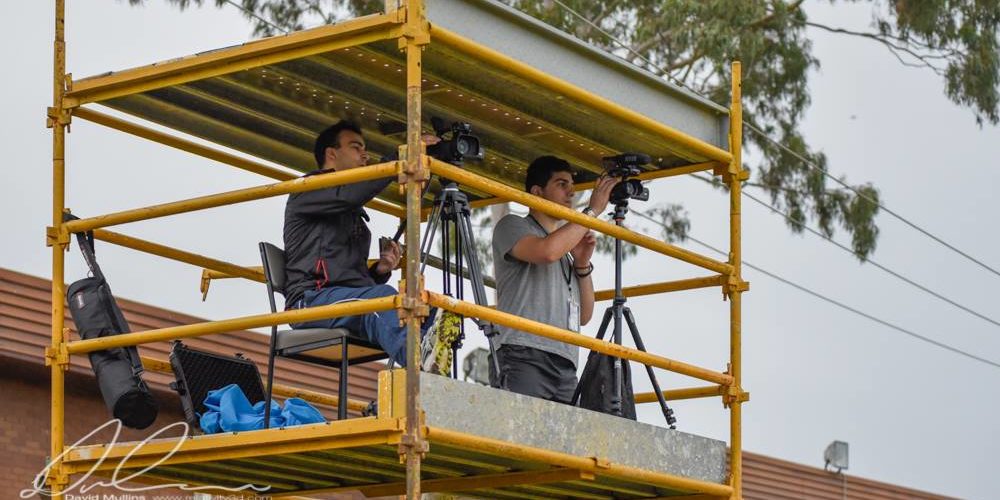Image: David Mullins
FFV Media Manager Teo Pellizzeri is our guest columnist with a final thought on the state of football media as we head into 2017.
With two causalities it’s been a brutal December for football media in Australia. The indefinite cessation of deep dive masters and analysis gurus Leopold Method was followed by similar action from former trendsetter and envy of all other states, MFootball.
It begs the question, what is the New Year’s resolution for state level football media? Not just the outlets, but the contributors. Be they students looking for a start or already on their way as “aspiring football media” types, or skilled enthusiasts wanting to grow the game.
Where MFootball couldn’t find a new generation of students to keep operating their news service as volunteers, the same talent pool can now find satisfaction and success dedicating their time to sites and social pages that cover A-League and world football with banter, memes, listicles and other modern, on-trend content that gets noticeable social engagement.
Here lies the challenge for state level football. To accentuate the exclusivity, the authenticity and the credibility of covering the football within.
Cover how though? That is the burning question for 2017. Using three years of data, weighted against anecdotal feedback and industry trends, FFV recently distributed its 2017 Media Strategy to the 350-odd clubs that are under the Federation’s banner. Premier competitions (NPL, NPLW, FFA Cup, Team App Cup) are only one dot point among 11 key responsibilities to cater for the entire state. NPL match reports went at the end of 2015, NPL round wraps go at the end of 2016 after both attracted a following well below the threshold to be called a niche. The FFV Podcast that primarily covered premier competitions came and went to an unsustainably low following, albeit to anecdotal critical success, in between.
The opportunities for aspiring football media are evolving. And while it’s not the name recognition of writing about Tevez’s contract with Shanghai Shenhua or Berisha breaking A-League scoring records, the profile of state level football is on the rise.
The mainstream media’s relationship with state level football is increasingly healthy thanks to the FFA Cup bringing the likes of Fox Sports and the daily newspapers not only to the cup, but to the NPL when the big occasions come around. Keep on this trajectory, keep growing the big event culture of the blockbuster NPL and FFA Cup games, and in time commercial television and radio will also join in.
Those are the big hits, “make bigger better” as the strategy says to get state level football in front of as many eyes as possible.
Outside those blockbuster occasions, the state season is thousands of matches between mid January and early October.
But the evolution of state level media now faces a crossroads, with independent media struggling to sustain, and clubs now the primary breakers of news. I have spoken at length with the editors of this site, The Corner Flag about what they want the site to look like in 2017 and what purpose it will serve not only Victorian football, but the people who work to create the site’s content.
With clubs now driving the news cycle for state level football, there has never been a better time to work within the club environment to build a media folio. For clubs, investing in their media team, particularly video, is the chance to show people a compelling, entertaining and skilled competition, and an experience that is worth the gate entry. It’s also the chance to go viral, as happened for a number of goals in 2016, including Rinor Muriqi’s NPL goal of the year.
For the aspiring journalist, it’s a great environment to build a profile and folio of quality work, with the added bonus of exclusivity and authenticity. To hone skills interviewing coaches and players, to do pieces to camera, to report, to commentate. For those not so comfortable in front of a camera, the opportunity to film, to edit and to create history in real time. And like almost everyone who has covered state level football, you will find players, people and clubs who deserve to have their story told to a greater audience.
There are success stories from recent seasons all around the NPL in club media teams. There are far more clubs who would love to replicate those success stories by bringing in the right people.
The NPL is a competition with a hotly contested championship, promotion race, and the real consequences of relegation. The quality of football, just see last year’s top 10 NPL goals, is regularly of a level matching that of the A-League. The women’s NPLW competition has never had a more relevant season to the big picture of women’s football in Australia. Not just because returning W-League players and aspirants will be at every club, but because at least a dozen national team hopefuls will be trying to play their way into the Junior Matildas or Young Matildas for youth Women’s World Cup qualifiers to be held in late 2017.
State level football is entering a period of great relevance to the national stage, aided no doubt by the aspirations of Victoria’s top clubs either to go do direct to the A-League, or create a national second division and open pro-rel pathway to the top league.
There has never been a better time to get involved. I would hope any aspiring media wanting to work in football or sports will keep Victoria’s state level in mind when they put together their to-do list for where to seek work experience in the New Year.
media@ffv.org.au

